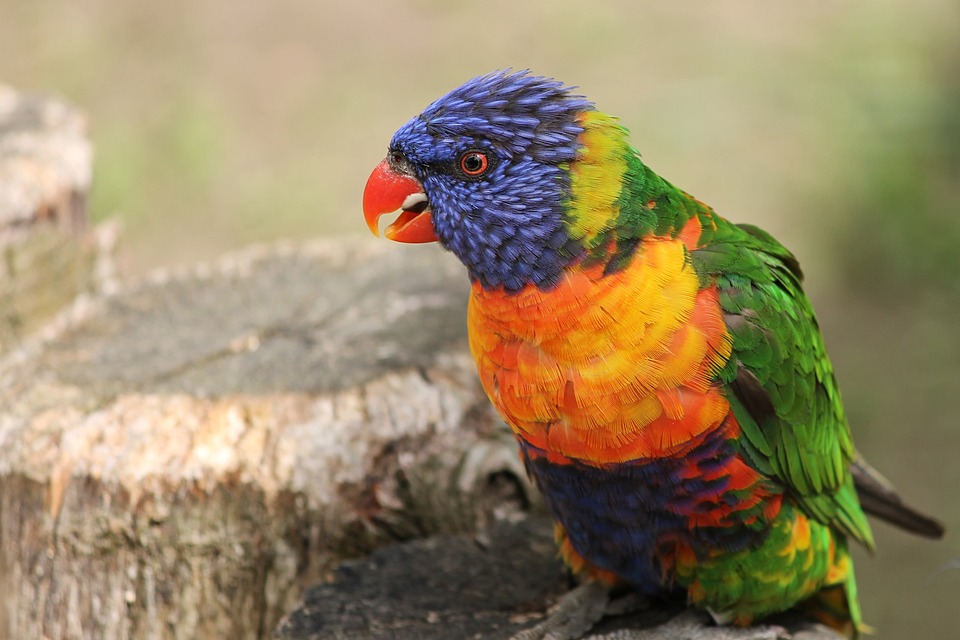Title: Addressing Fear of Specific Handling Procedures in Parrots: The Power of Positive Reinforcement
Introduction:
Understanding and addressing fear in parrots is crucial for their overall well-being and the development of a healthy bond with their human caregivers. In this article, we will explore the effectiveness of positive reinforcement in addressing fear of specific handling procedures in parrots, providing practical tips and insights for successful implementation.
I. Understanding Fear in Parrots
1.1 The Nature of Fear in Parrots
Parrots, like all animals, experience fear as a natural response to perceived threats. Understanding the root causes of fear in parrots can help caregivers address these issues effectively.
1.2 Identifying Fearful Behaviors in Parrots
Fearful behaviors in parrots can manifest in various ways, including vocalizations, feather plucking, biting, or hiding. Recognizing these behaviors is crucial for identifying and addressing specific fears.
1.3 The Importance of Addressing Fear in Parrots
Unaddressed fear in parrots can lead to long-term stress, decreased quality of life, and strained relationships with their caregivers. By addressing fear in a positive and supportive manner, caregivers can help their parrots feel safe and build trust.
II. The Power of Positive Reinforcement
2.1 What is Positive Reinforcement?
Positive reinforcement is a training technique that focuses on rewarding desired behaviors to encourage their repetition. It involves using rewards, such as treats or praise, to increase the likelihood of a behavior occurring again.
2.2 Benefits of Positive Reinforcement in Parrot Training
Positive reinforcement not only helps address fear but also strengthens the bond between parrots and their caregivers. It promotes a positive learning environment and encourages the parrot to engage in desired behaviors willingly.
2.3 Building Trust and Confidence through Positive Reinforcement
By using positive reinforcement, caregivers can create a safe and supportive environment that helps their parrots overcome fear and build trust and confidence. This approach empowers parrots, promoting their emotional well-being.
III. Addressing Fear of Specific Handling Procedures
3.1 Step 1: Identify the Fearful Trigger
To address fear of specific handling procedures, caregivers must identify the specific trigger that causes fear in their parrot. This could be a specific object, a particular sound, or a certain handling technique.
3.2 Step 2: Gradual Desensitization
Once the trigger is identified, caregivers should gradually expose the parrot to the fear-inducing stimulus in a controlled and safe manner. This incremental approach allows the parrot to become accustomed to the trigger without feeling overwhelmed.
3.3 Step 3: Establish a Positive Association
During the desensitization process, caregivers should use positive reinforcement, such as treats or praise, to create a positive association with the feared handling procedure. This helps the parrot associate the procedure with something enjoyable.
3.4 Step 4: Create a Safe and Stress-Free Environment
Providing a safe and stress-free environment is essential for addressing fear in parrots. Minimizing distractions, ensuring a comfortable living space, and maintaining a consistent routine can all contribute to creating a conducive environment for positive reinforcement training.
3.5 Step 5: Patience and Consistency
Addressing fear in parrots requires patience and consistency. Caregivers should work at the parrot’s pace, gradually increasing the difficulty level while ensuring positive experiences. Consistency in training methods and reinforcement techniques is also crucial for success.
IV. Frequently Asked Questions (FAQs)
4.1 Q: How long does it take to address a parrot’s fear of handling procedures?
The time required to address a parrot’s fear can vary depending on the individual bird and the severity of the fear. It is essential to be patient and allow the parrot to progress at their own pace.
4.2 Q: Can I use treats as positive reinforcement for fearful parrots?
Yes, treats can be an effective form of positive reinforcement for fearful parrots. However, it is essential to ensure that the treats are healthy and given in moderation.
4.3 Q: What if my parrot shows aggression during the handling procedure?
If a parrot shows aggression during handling, it is crucial to prioritize safety. Consult with an avian behaviorist or a professional trainer who can provide guidance on managing aggressive behaviors safely.
4.4 Q: Are there any handling procedures that may require professional assistance?
Certain handling procedures, such as wing clipping or beak trimming, may require professional assistance to ensure the safety and well-being of both the parrot and the caregiver. Consulting with an avian veterinarian or an experienced avian professional is recommended.
Conclusion:
Using positive reinforcement techniques to address fear of specific handling procedures in parrots can significantly improve their overall emotional well-being and strengthen the caregiver-parrot bond. Remember to approach the process with patience, consistency, and respect for your parrot’s individual needs. With time and effort, you can help your feathered friend overcome their fears and thrive in their environment.









